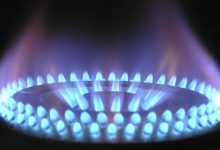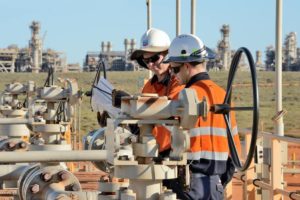If you needed another reason to ditch the gas oven, yet another study is out detailing the health risks of burning the fuel inside homes — this time it’s by lifting blood cancer-linked benzene levels by 5 to 70 times that of an electric cooker.
Analysis from a team at Stanford University in the US found that a cooktop burner on high, or a gas oven set to 180 °Celsius, can raise the levels of benzene indoors to above those of secondhand tobacco smoke.
“Mean benzene emissions from gas and propane burners on high and ovens set to 350 °F [180 °C] ranged from 2.8 to 6.5 μg min–1, 10 to 25 times higher than emissions from electric coil and radiant alternatives; neither induction stoves nor the food being cooked emitted detectable benzene,” the study said.
The study also found that oven-produced benzene lingers for hours in the home and can migrate to other rooms where it can remain at above-international health benchmarks.
In bedrooms, benzene in the air was found to be five to 70 times baseline levels.
“Benzene forms in flames and other high-temperature environments, such as the flares found in oil fields and refineries. We now know that benzene also forms in the flames of gas stoves in our homes,” said study senior author Rob Jackson, the Michelle and Kevin Douglas Provostial Professor and professor of Earth system science at the Stanford Doerr School of Sustainability.
“Good ventilation helps reduce pollutant concentrations, but we found that exhaust fans were often ineffective at eliminating benzene exposure.”
The study itself analysed stoves and ovens in 87 homes while they were turned on, as opposed to leaks from turned off stoves, and was from the oven itself rather than the food being cooked.
Benzene linked to blood cancer
Benzene is linked to a range of blood cancers, including childhood leukaemia (particularly acute myeloid leukaemia) as well as acute lymphocytic leukaemia, chronic lymphocytic leukaemia, and others such as multiple myeloma and non-Hodgkin lymphoma, according to the American Cancer Society.
Shorter-term benzene exposure suppresses blood cell production which creates anaemia, while chronic benzene exposure increases the risk of blood cancers.
In 2001, an Australian study put the cost to the country of “sick buildings” at $12 billion a year.
But Australia has no national performance standards for indoor air quality and the Department of Climate Change, Energy, the Environment and Water openly admits that gas cookers and heaters are a problem area.
Last year experts called for imminent new rules for indoor air quality in the Medical Journal of Australia, saying the area has been a neglected “no man’s land” which regulators of different aspects of buildings and environments have avoided taking responsibility for.
“In Australia, the pre‐pandemic costs attributable to respiratory, neurological and other symptoms and illnesses arising from exposure to hazardous gases and particles (both biological and non‐biological) in the indoor environment were certainly above the $12 billion per year calculated in a 2001 study,” the authors wrote.
“A simple term for this action is “ventilation”. This is of course not a new concept: over 150 years ago, British nurse Florence Nightingale highlighted the need for ventilation “to keep the air he breathes [hospital patient] as pure as the external air without chilling him”. Even though the concept is simple, its implementation poses many challenges, as highlighted above in relation to indoor air standards in general.”
Australia behind the 8-ball on gas disconnection
Research into the health effects of gas appliances in the home all come to one sickening conclusion: gas leaks and gas burned create a toxic atmosphere indoors.
An earlier Stanford-led study showed that gas-burning stoves inside US homes leak methane at a level comparable to the carbon dioxide emissions from about 500,000 petrol-powered cars.
Carbon monoxide, particulates, nitrogen and formaldehyde are all released from gas appliances.
A recent analysis from the think tank RMI found the US gas industry knew about the health effects of indoor gas use, such as asthma, as long ago as the 1970s.
In Australia, only the ACT has banned gas connections to new homes. And after a number of instances of gas companies hiking disconnection bills, the Australian Energy Regulator capped the fees able to be charged for getting rid of house gas connections.
See also the latest report from the Grattan Institute: All-electric homes save money and emissions. New gas connections should be banned










